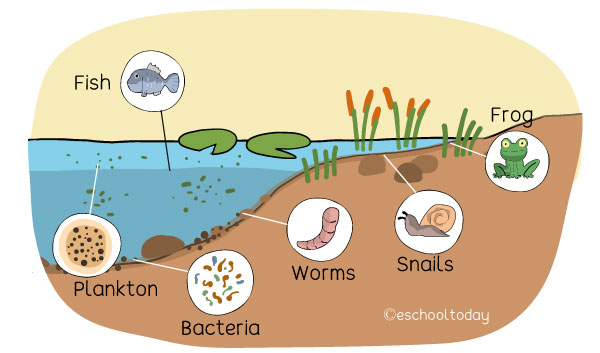- Aquatic Ecosystems
Introduction to Aquatic Ecosystems
About 70% of the surface of the planet earth is covered by water. The larger part of the earth’s water is the ocean (seawater). Only 3% of the water on the surface is fresh; the remaining 97% resides in the ocean. Of freshwater, 69% is in glaciers, 30% underground, and less than 1% is in the lakes, rivers, and swamps. That means water on earth, as a habitat for many tiny organisms, medium and large water animals is very significant, and together, becomes the Aquatic Biome.
Water on earth is not all the same. They vary a lot in terms of chemical composition, nature of its flow or stillness, temperature, and so on. It means that plant and animal life in these waters will be different too.
What is an Aquatic Ecosystem?
Aquatic ecosystems are an umbrella term for all ecosystems that exist in water. Aquatic Ecosystems, in simple terms, is an ecosystem type that depends on water (both marine and freshwater) most or part of the time. A scientist who studies inland water ecosystems (limnology) is called a limnologist.
The opposite will be terrestrial ecosystems, which are all ecosystems that exist on land.
Water-based ecosystems can be put into two main groups, namely Freshwater Ecosystems and Marine Ecosystems.
Marine Ecosystems describe the biotic and abiotic interactions that occur in the oceans. Marine waters are very different from freshwaters because of the high salt content of seawater.
Freshwater ecosystems include two major categories, Lentic and Lotic Systems. Lentic systems describe all standing water ecosystems. Lotic systems describe all flowing water ecosystems. In both Lentic and Lotic ecosystems, abiotic factors such as light, temperature, pH, alkalinity, pressure, depth, etc. of the water are key and determine what kind of living and non-living interactions can exist there.
In all the above water types, living activities occur in different zones: such as the surface of the waters, middle parts, and at the bottom of the water. The scientific names for life forms in the water are Plankton, Nekton, and Benthos. Then, there are also interactions on the surface of and along these waters.
As you can tell already, there are complex food webs that exist in aquatic ecosystems. Now, shall we take a closer look at these three terms: Plankton, Nekton, and Benthos.
